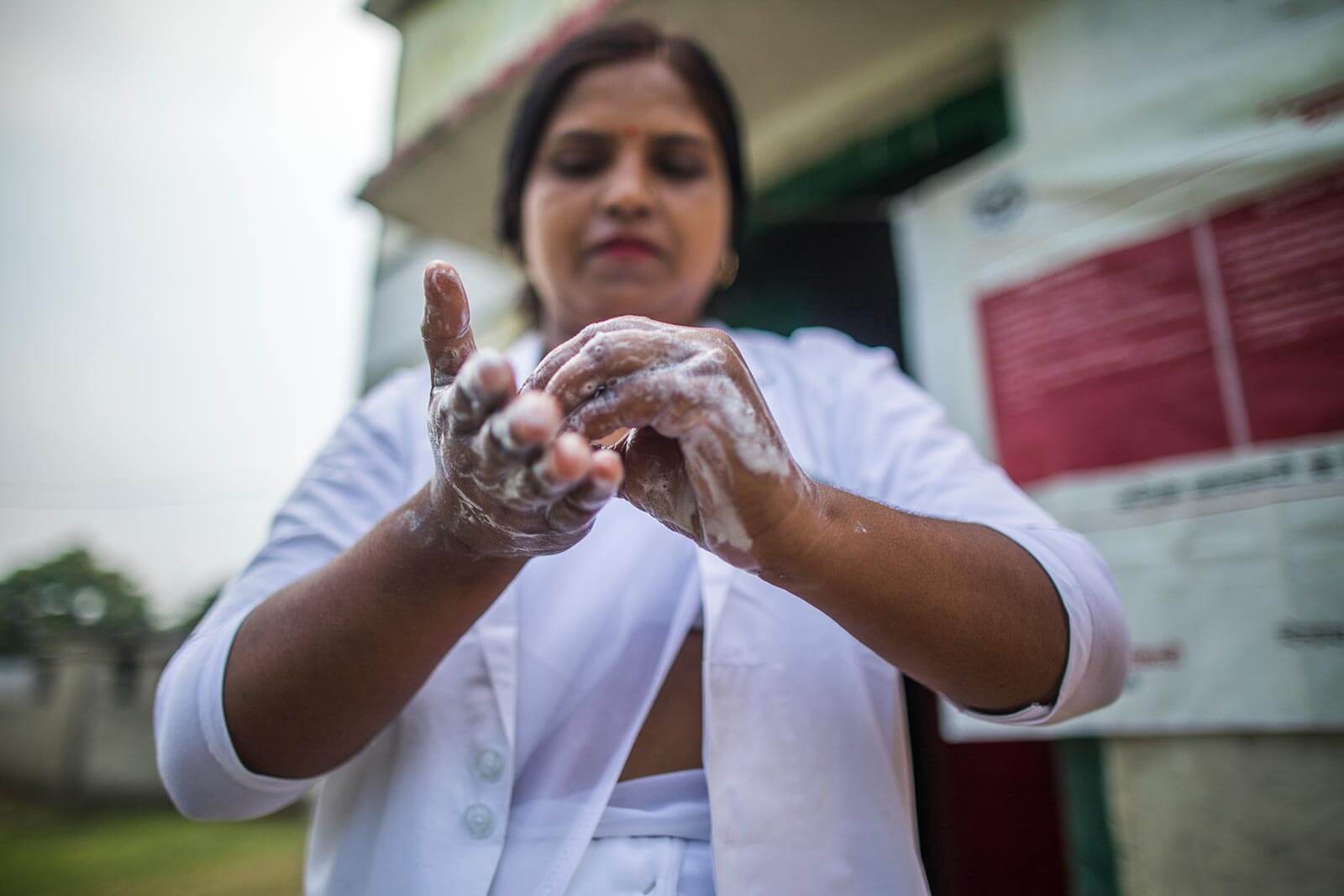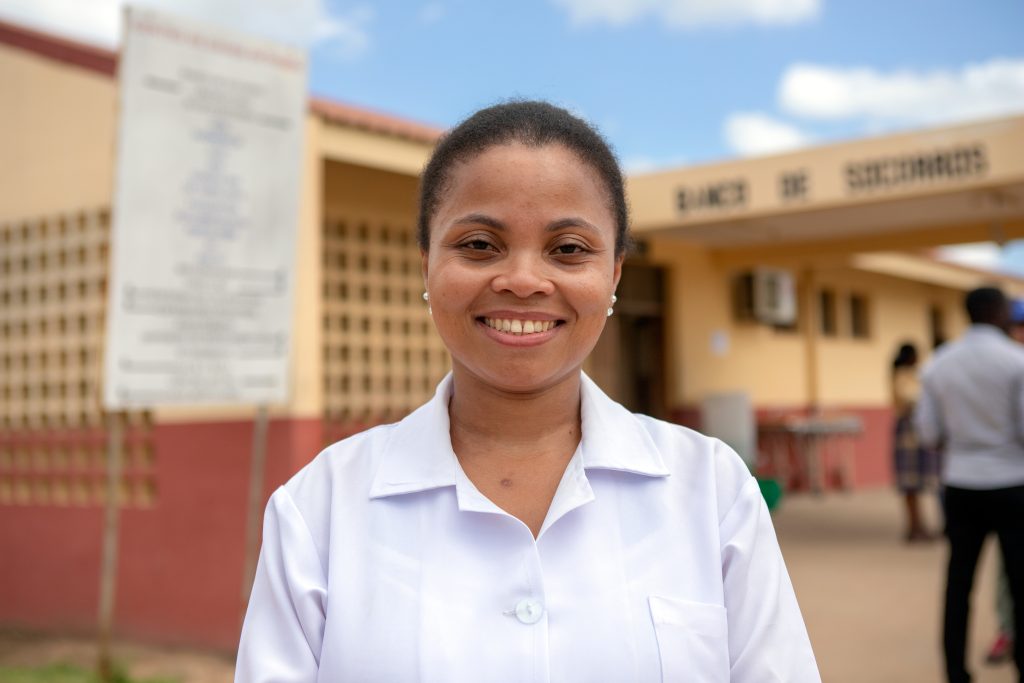WASH FIT portal
This page includes a range of WASH FIT related resources and information. Further country examples are available by searching "WASH FIT" in the Resources page.

This page includes a range of WASH FIT related resources and information. Further country examples are available by searching "WASH FIT" in the Resources page.

WASH FIT (the Water and Sanitation for Health Facility Improvement Tool) is a risk-based management tool for health care facilities, covering key aspects of water, sanitation, hand hygiene, environmental cleaning, health care waste management and selected aspects of energy, building and facility management.
• Small primary health care facilities in lower-resource settings (e.g. health centres, health posts).
• Larger facilities (e.g. district hospitals).
• Middle-income settings where standards are yet to be met.
• Emergency settings, including temporary facilities in camps.
To date, WASH FIT has been used in nearly 70 countries. These include:
Angola, Bahrain, Bangladesh, Belize, Benin, Bhutan, Burkina Faso, Cambodia, Chad, Comoros, Djibouti, DRC, Ecuador, Egypt, Eswatini, Ethiopia, Fiji, Gambia (Republic of The), Ghana, Guinea, Guinea-Bissau, Haiti, India, Indonesia, Iraq, Jamaica, Jordan, Kazakhstan, Kenya, Lao People’s Democratic Republic, Lebanon, Lesotho, Liberia, Madagascar, Malawi, Maldives, Mali, Mozambique, Myanmar, Namibia, Nepal, Niger, Nigeria, Pakistan, occupied Palestinian territory, Papua New Guinea, Peru, Philippines, Qatar, Rwanda, Saudi Arabia, Sierra Leone, Somalia, South Africa, Sudan, Sri Lanka, Syrian Arab Republic, Tajikistan, Togo, Tunisia, Uganda, Ukraine, United Republic of Tanzania, Vanuatu, Venezuela, Viet Nam, Zambia, Zimbabwe.
A status report will be published by WHO and UNICEF at the end of 2024. It will include a short analysis of WASH FIT application in a select number of countries, along with case studies which illustrate different approaches for implementing and scaling up WASH FIT. Recommendations for improving the tool, its implementation and integration with health, energy, and climate efforts are also included. In the meantime, read a selection of WASH FIT case studies here.
WHO and UNICEF are collecting information on where, how and in how many facilities the tool is being used. Are you using WASH FIT? If so, we would like to hear from you, please fill in our form.
Nurse in Guinea Bissau – Photo credit Karel Prinsloo
